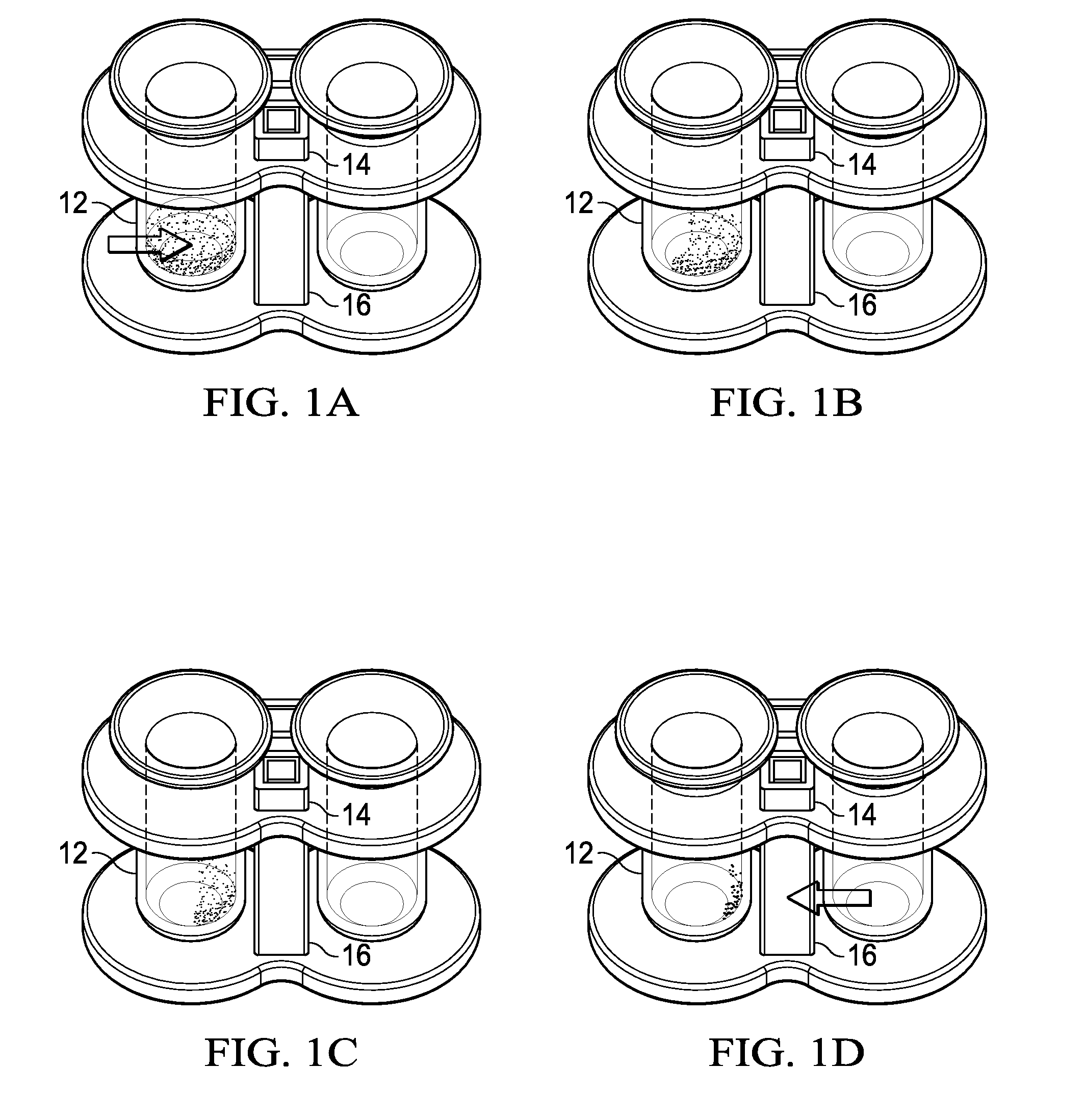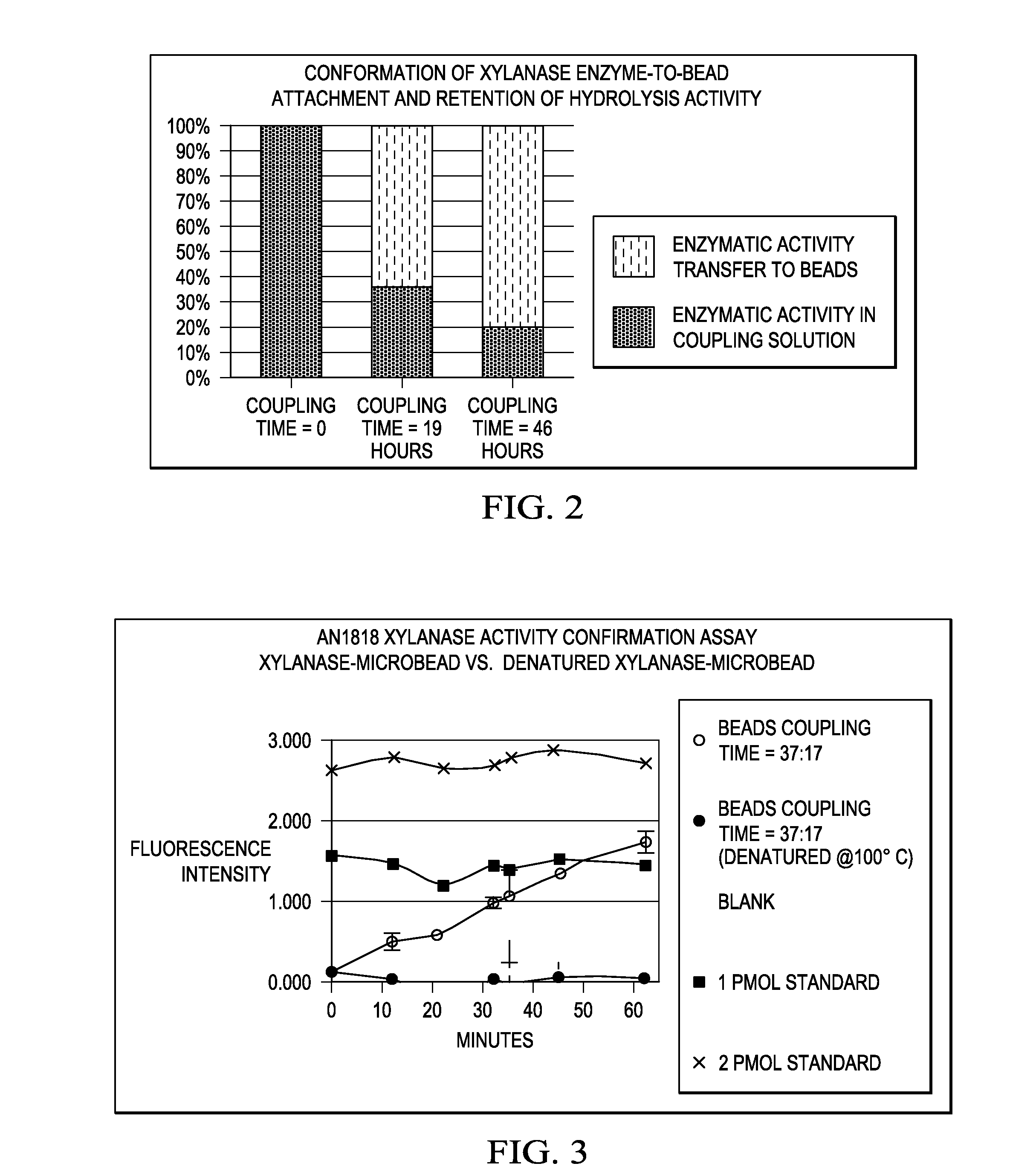Method to facilitate recycling of biomass degrading enzymes
- Summary
- Abstract
- Description
- Claims
- Application Information
AI Technical Summary
Benefits of technology
Problems solved by technology
Method used
Image
Examples
Embodiment Construction
[0036]The present invention utilizes the attachment of an enzyme to a functionalized paramagnetic particle, such as a glass-iron composite spherical bead or “microbead”. The enzyme is used to degrade biomass, many of which are well known in the art at present, such as but not limited to: xylanase, cellulose, lacasse, ligininase, pectin-lyase and / or pectinase. Since the microbead has paramagnetic properties, it can be collected, along with the attached enzyme, for reuse in subsequent biomass digestion reactions.
[0037]Example microbeads may be obtained from Bioclone Inc., 7965 Silverton Ave., Suite 1309, San Diego, Calif. 72126 and include but are not limited to the following: Amine-terminated beads; DADPA-terminated beads; Carboxy-terminated beads; Carboxy-terminated beads; Epoxy-activated beads; Expoy-activated beads; Aldehyde-modified beads; Aldehyde-modified beads; Hydrazide-modified beads; IDA-modified beads; Silica-modified beads.
[0038]The example microbeads and functional group...
PUM
 Login to View More
Login to View More Abstract
Description
Claims
Application Information
 Login to View More
Login to View More - R&D
- Intellectual Property
- Life Sciences
- Materials
- Tech Scout
- Unparalleled Data Quality
- Higher Quality Content
- 60% Fewer Hallucinations
Browse by: Latest US Patents, China's latest patents, Technical Efficacy Thesaurus, Application Domain, Technology Topic, Popular Technical Reports.
© 2025 PatSnap. All rights reserved.Legal|Privacy policy|Modern Slavery Act Transparency Statement|Sitemap|About US| Contact US: help@patsnap.com



